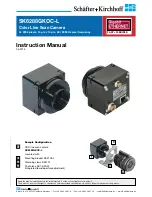
22
About the setup menu window
q
[Live] button
Displays the "Live" page.
w
[Basic] button
Displays the "Basic" page. The basic settings such
as time and date and camera title, and the settings
relating to the SD memory card can be configured
on the "Basic" page. (
☞
page 24)
e
[Image/Audio] button
Displays the "Image/Audio" page. The settings relat-
ing to image capture size and image quality of
JPEG/H.264 (or MPEG-4) camera images can be
configured on the "Image/Audio" page. (
☞
page 36)
r
[Multi-screen] button
Displays the "Multi-screen" page. The cameras from
which images are to be displayed on a multi-screen
can be registered on the "Multi-screen" page. (
☞
page 53)
t
[Alarm] button
Displays the "Alarm" page. The settings relating to
alarm occurrences such as settings for the alarm
action at an alarm occurrence, the alarm occurrence
notification, and the VMD area settings can be con-
figured on the "Alarm" page. (
☞
page 54)
y
[Advanced func.] button
Displays the "Advanced func." page. The setting
relating to the XML notification, destinations of infor-
mation about the face detection and the settings
relating to the face detection can be configure on the
"Advanced func." page. (
☞
page 63)
u
[User mng.] button
Displays the "User mng." page. The settings relating
to the authentication such as users and PCs restric-
tions for accessing the camera can be configured on
the "User mng." page. (
☞
page 66)
i
[Server] button
Displays the "Server" page. The settings relating to
the mail server, the FTP server and the NTP server
to which the camera accesses can be configured on
the "Serve" page. (
☞
page 69)
o
[Network] button
Displays the "Network" page. The network settings
and the settings relating to DDNS (Dynamic DNS),
SNMP (Simple Network Management Protocol) and
the FTP (File Transfer Protocol) periodic transmis-
sion can be configured on the "Network" page.
(
☞
page 72)
!4
Setup page
!3
Status display
area
q
[Live] button
w
[Basic] button
e
[Image/Audio] button
r
[Multi-screen] button
t
[Alarm] button
y
[Advanced func.] button
u
[User mng.] button
i
[Server] button
o
[Network] button
!0
[Schedule] button
!1
[Maintenance] button
!2
[Help] button
















































